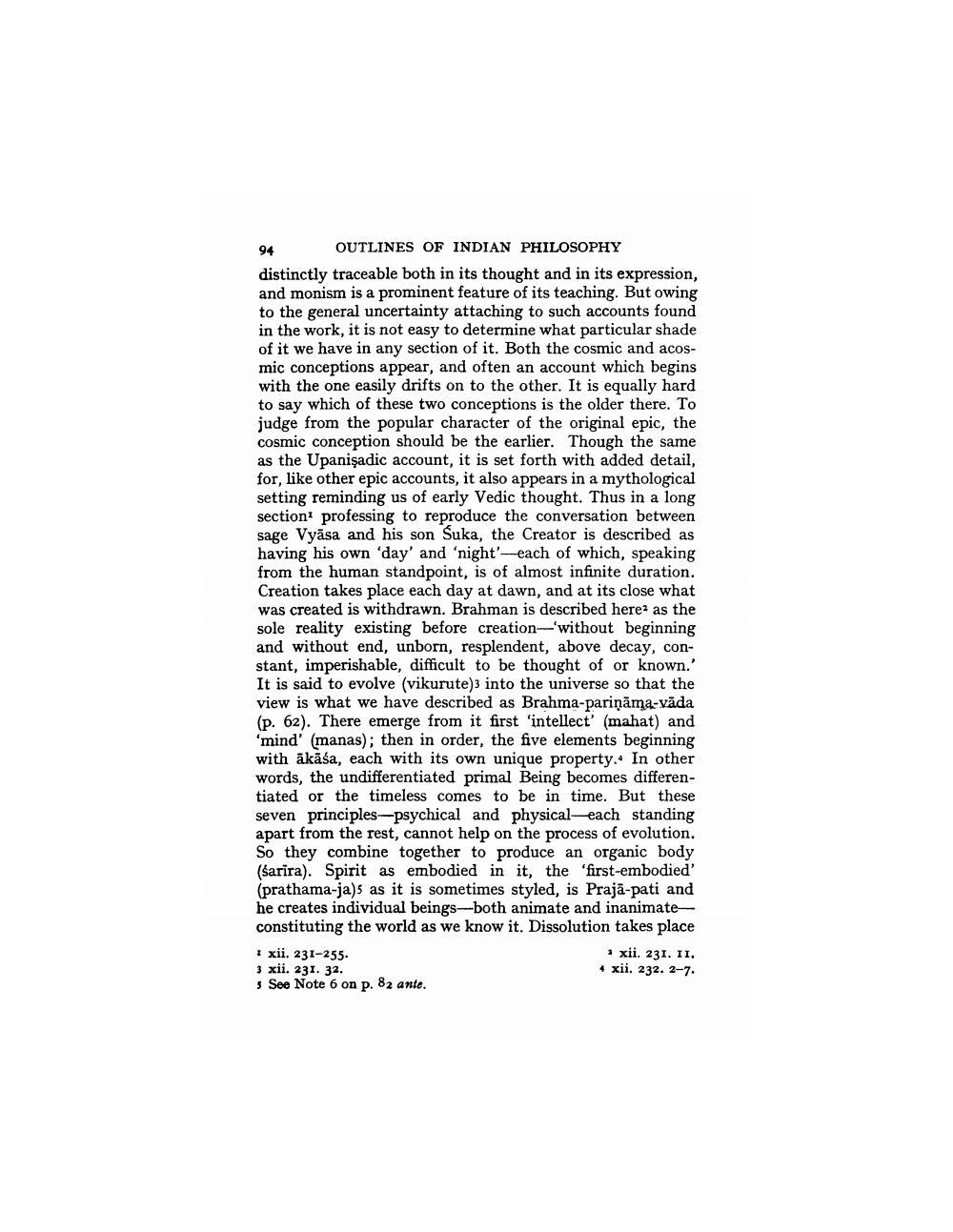________________
OUTLINES OF INDIAN PHILOSOPHY distinctly traceable both in its thought and in its expression, and monism is a prominent feature of its teaching. But owing to the general uncertainty attaching to such accounts found in the work, it is not easy to determine what particular shade of it we have in any section of it. Both the cosmic and acosmic conceptions appear, and often an account which begins with the one easily drifts on to the other. It is equally hard to say which of these two conceptions is the older there. To judge from the popular character of the original epic, the cosmic conception should be the earlier. Though the same as the Upanişadic account, it is set forth with added detail, for, like other epic accounts, it also appears in a mythological setting reminding us of early Vedic thought. Thus in a long section professing to reproduce the conversation between sage Vyāsa and his son Suka, the Creator is described as having his own 'day' and 'night'-each of which, speaking from the human standpoint, is of almost infinite duration. Creation takes place each day at dawn, and at its close what was created is withdrawn. Brahman is described here as the sole reality existing before creation-without beginning and without end, unborn, resplendent, above decay, constant, imperishable, difficult to be thought of or known.' It is said to evolve (vikurute) into the universe so that the view is what we have described as Brahma-pariņāma-vāda (p. 62). There emerge from it first 'intellect' (mahat) and "mind' (manas); then in order, the five elements beginning with akāśa, each with its own unique property. In other words, the undifferentiated primal Being becomes differentiated or the timeless comes to be in time. But these seven principles-psychical and physical-each standing apart from the rest, cannot help on the process of evolution. So they combine together to produce an organic body (sarira). Spirit as embodied in it, the 'first-embodied' (prathama-ja)as it is sometimes styled, is Prajā pati and he creates individual beings-both animate and inanimateconstituting the world as we know it. Dissolution takes place I xii. 231-255.
* xii. 231. II. 3 xii. 231. 32.
4 xii. 232. 2-7. 3 See Note 6 on p. 82 ante.




